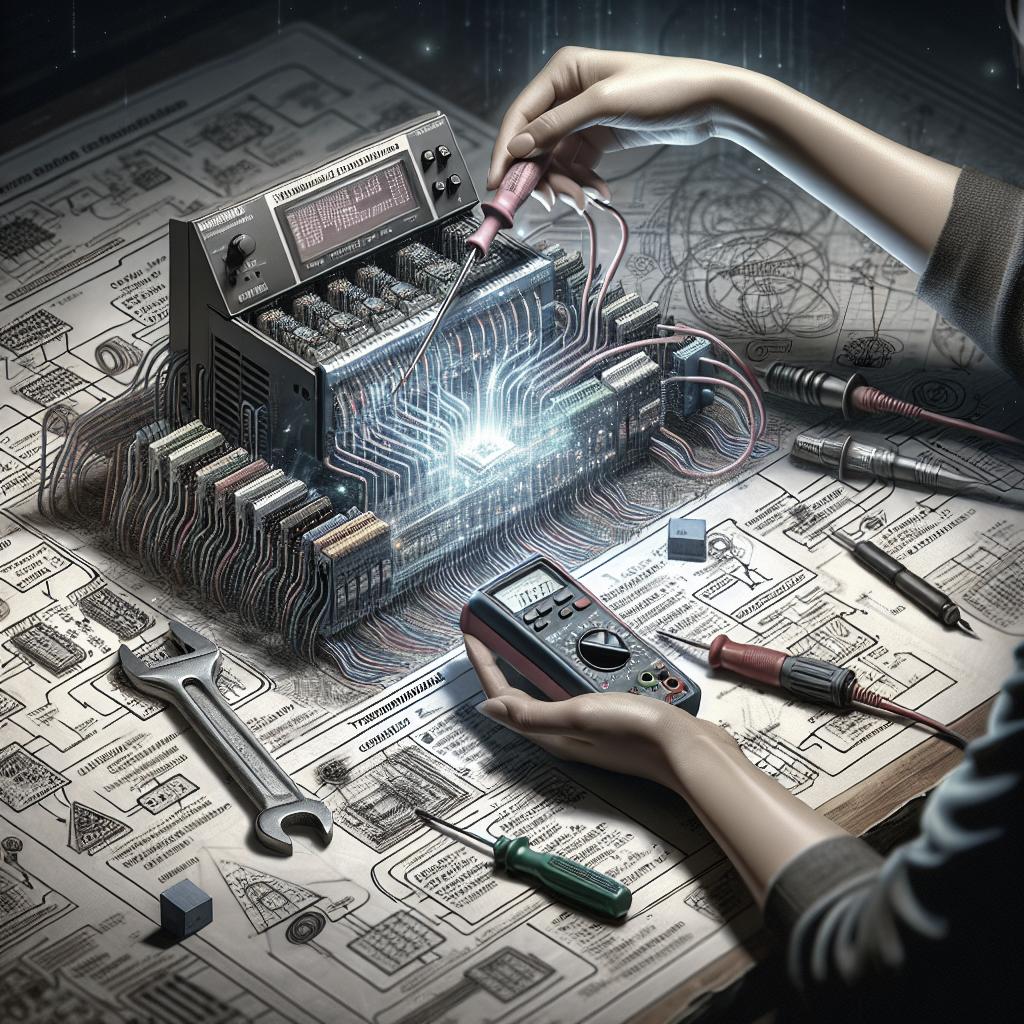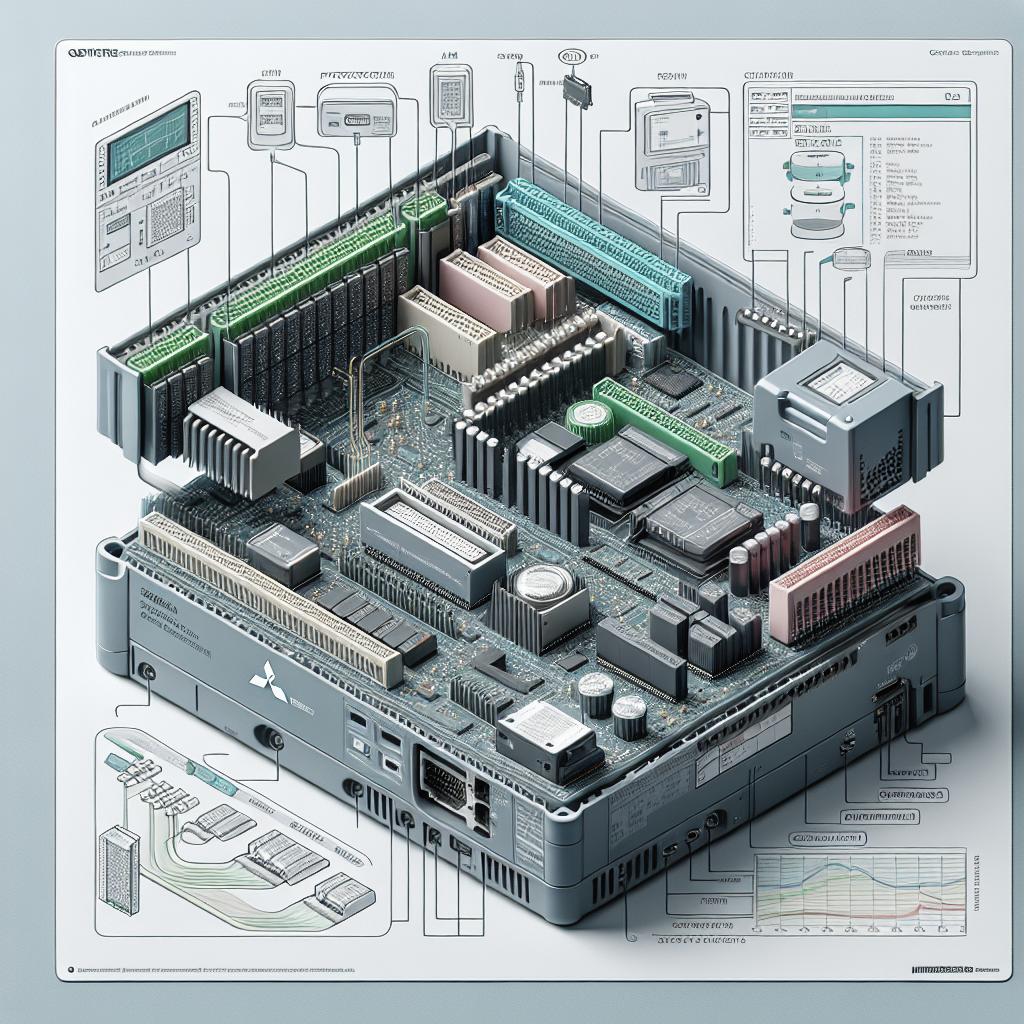<>
— Programmable Logic Controllers (PLCs) from Mitsubishi Electric are integral to many industrial applications due to their reliability and advanced functionalities. However, like any piece of sophisticated machinery, these devices can face issues that bring operations to a halt. In this comprehensive guide, we’ll explore the common causes of PLC failure and provide actionable troubleshooting steps. You’ll learn to identify problems such as lack of power, bad connectors, overheating, module failure, electromagnetic interference (EMI), and memory corruption. We’ll also dive into specific strategies for troubleshooting PLC hardware and highlight the importance of sourcing replacement parts from reliable suppliers. Lastly, this guide will point you toward helpful resources for further reading, ensuring you have everything you need to keep your PLC systems running smoothly. —
Common Causes of PLC Failure
Lack of Power
A PLC system’s operation relies heavily on a steady and reliable power supply. Power issues can stem from several sources, including faulty power supplies, loose connections, or issues with the internal circuitry. Always confirm the power supply is within the specified voltage range and inspect all connectors to ensure they’re secure. An unstable power supply can result in sporadic performance or complete system failure. To diagnose power issues, start by measuring the voltage at the power terminals using a multimeter. Ensure that it matches the recommended figures specified in the PLC’s manual. If power levels are unstable, you may need to check for conditions like surges or brownouts in your facility’s power system. Investing in an uninterruptible power supply (UPS) can provide an added layer of protection against power-related problems.
Bad Connectors
Bad connectors can lead to intermittent connectivity issues, causing sporadic PLC failures or unreliable sensor readings. Over time, connectors can become corroded, loose, or damaged due to mechanical stress or environmental factors. Regular inspection and maintenance of connectors should form part of your routine. When troubleshooting connectors, visually inspect each for signs of wear and tear. Gently tug on the connectors to make sure they’re securely fastened. Using contact cleaner to clean connectors can often resolve minor issues caused by dirt or oxidation. If any connectors are damaged, replacement is the most viable solution to restore system integrity.
Overheating
Overheating is another frequent cause of PLC issues, particularly in environments with poor ventilation. Excessive heat can degrade the performance of electronic components and even lead to permanent damage. It’s essential to place PLC units in well-ventilated areas and use cooling systems if necessary. Monitor the operating temperature of your PLC to ensure it’s within the manufacturer’s specified range. You can use thermal imaging cameras to identify hot spots in your installation. Improving airflow around the unit or installing additional cooling fans can help mitigate overheating issues and prolong the lifespan of your PLC.
Module Failure
Module failure within a PLC system can disrupt operations or lead to complete process failure. A module could fail due to internal component defects, exposure to harsh environmental conditions, or electrical surges. Identifying a failed module usually involves observing error codes or irregularities in the PLC’s operation. To diagnose module failure, refer to the PLC’s diagnostic messages or error codes, which can provide clues about the malfunctioning module. Swap the suspected faulty module with a known working one to confirm the issue. Spare modules should always be kept on hand to minimize downtime.
Electromagnetic Interference (EMI)
Electromagnetic Interference (EMI) can severely impact the functionality of PLCs by disrupting the electrical signals used for their operations. Sources of EMI include nearby machinery, radio transmissions, and even certain types of lighting. Shielding and proper grounding are crucial to protecting PLC systems from EMI. To mitigate EMI-related issues, ensure that your PLC and its cables are properly shielded. The use of ferrite beads on cables can help reduce electromagnetic noise. Verifying that all components are appropriately grounded can also minimize EMI and improve system reliability.
Memory Corruption
Memory corruption within a PLC can lead to unpredictable behavior or loss of important program data. This issue may arise due to power interruptions, software bugs, or aging components. Regular backups and a well-maintained power supply can significantly reduce the risk of memory corruption. If you suspect memory corruption, reloading the control program from a known good backup can often resolve the issue. For persistent problems, performing a memory diagnostic test can identify faulty memory blocks that need to be replaced. —
How to Troubleshoot PLC Hardware
1. Review the PLC Hardware and Program
The first step in troubleshooting PLC hardware is to thoroughly review both the physical hardware and the associated control program. Examine the PLC unit for any obvious signs of damage or wear and check all connections and modules. The software should be reviewed for logic errors or misconfigurations that could be causing the issue. Cross-reference the current operational status with the expected functionalities as outlined in the manufacturer’s manuals and programming guides. Using PLC programming software, scan through the control logic to identify any inconsistencies or errors that could be affecting performance.
2. Trace The Problem To Its Source
Once the initial review is complete, the next step is to trace the problem to its source. This may involve systematically isolating different parts of the system and testing them individually. For instance, you could disconnect input devices one by one to see if the problem persists, thereby isolating the faulty component. Utilize diagnostic tools and test equipment, such as multimeters and oscilloscopes, to measure signal integrity and voltages at various points in the system. Document your findings for each test to build a comprehensive picture of where the issue lies.
3. Verify The Cause
After tracing the problem, it’s essential to verify the suspected cause before proceeding with repairs or replacements. This means confirming that the identified issue consistently reproduces the problem and that no other factors are involved. Repeat the tests under different conditions to ensure that other variables are not influencing the outcome. If replacing a component or adjusting a parameter resolves the issue, test the system rigorously to confirm that normal operation has been restored. —
Get Replacement PLC Hardware From Industrial Automation Co.
When you identify faulty PLC hardware that needs replacing, sourcing parts from reputable suppliers is crucial. Industrial Automation Co. offers a comprehensive range of Mitsubishi Electric PLC components, ensuring compatibility and reliability. Quick-turnaround times and a dedication to quality mean you can get your systems back online with minimal downtime. Purchasing from a trusted supplier like Industrial Automation Co. ensures you receive genuine parts backed by warranty and support. This minimizes the risks associated with counterfeit or substandard components, safeguarding your operations against future failures. —
How to Troubleshoot PLC – Related Articles
To further enhance your troubleshooting skills and stay updated with the latest practices, exploring additional resources available online can be invaluable. Various articles and guides can provide deeper insights into specific PLC models, advanced troubleshooting techniques, and real-world applications. Consider articles focusing on common troubleshooting scenarios, user manuals, and community forums where professionals share their experiences and solutions. These resources can offer a wealth of knowledge, helping you to stay ahead of potential issues and optimize your PLC’s performance. —
Summary of Main Points
| Section | Main Points |
|---|---|
| Common Causes of PLC Failure | Lack of Power, Bad Connectors, Overheating, Module Failure, Electromagnetic Interference (EMI), Memory Corruption |
| How to Troubleshoot PLC Hardware | Review the PLC Hardware and Program, Trace The Problem To Its Source, Verify The Cause |
| Get Replacement PLC Hardware From Industrial Automation Co. | Sourcing reliable and compatible replacement parts quickly to minimize downtime |
| How to Troubleshoot PLC – Related Articles | Leveraging additional resources and related articles for advanced troubleshooting techniques and staying updated |
— This guide provides a detailed roadmap to effectively troubleshoot Mitsubishi Electric PLCs, helping you maintain smooth and efficient operations. Armed with this knowledge, you can address common issues swiftly and proficiently, ensuring minimal disruption to your industrial processes.


